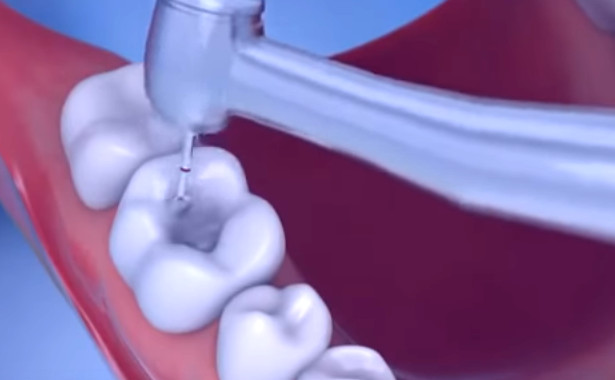Your tooth may be damaged by decay that creates a cavity and dentists have various ways of treating cavities. Cavity filling is among the various procedures that dentists use to restore a tooth that has been damaged by decay. With cavity filling, it allows the damaged tooth to get back to its normal shape and function. When conducting a cavity filling procedure, a dentist will first remove the decayed part or material of the tooth and clean it. Thereafter, he or she will fill the cavity that has been cleaned out using a special filling material. Cavity filling helps close off those spaces that could provide entry of bacteria into the tooth. It also helps to prevent further decay of your tooth. The materials used to fill the cavity include porcelain, gold, amalgam , or a composite resin.
What Type of Cavity Filling Do You Need?
There are many options when it comes to the type of cavity filling to choose. Each of these tooth fillings has its own pros and cons. The right tooth filling mainly depends on cost, your aesthetic preferences, and insurance cover. It also depends on the extent of repair, possible allergic reactions to some materials, and where the filling is being done.
Amalgam (silver) fillings: While these are relatively inexperience, they are resistant to wear. A disadvantage of using amalgam silver fillings is that they are dark in color meaning they tend to be more noticeable compared to composite or porcelain restorations. They may not be used in front teeth and very visible areas of the mouth.
Gold fillings: Gold inlays tend to be well tolerated by gums and are long lasting, often surviving for more than 20 years. The fillings are designed to be ordered in a laboratory before they are fitted. Many dentists feel that gold fillings are the best material, but the downside is that they are pretty expensive and require an individual to have multiple visits to have them fitted.
Porcelain fillings: These are also known as onlays or inlays and they are ordered to be produced in a laboratory before being bonded to the tooth. Porcelain fillings can be matched to the tooth’s color and they tend to resist staining. The fillings cover most of an individual’s tooth and their cost is in the same range as that of gold fillings.
Composite (plastic) resins: These can be matched with the color of the teeth. They are used in situations where natural appearance is needed. In fitting the fillings, the ingredients are mixed and directly placed into the tooth’s cavity to harden. In people needing large fillings, composite resins may not be an ideal choice because they tend to wear and chip over time. The material may also be stained from tobacco, tea, and coffee or wine. Another disadvantage is that they don’t last very long, often they take about 3 to 10 years.
Does filing a cavity hurt?
Many patients are apprehensive about going to fill their dental cavity because they believe the procedure will be a painful one. Well, the procedure is not as bad as perceived. During a cavity filling procedure, there may not be pain. The filling is not done in the place where there are nerves, so the chances of feeling pain is unlikely. Since nerves are not touched usually, the chances of pain are less. Having said that there are chances the procedure may be done close to the nerve; so an anesthetic is given to reduce or nullify all incidence of pain. First, a numbing gel is applied, so that that when an injection is given, you do not feel the pain. After the anesthetic wears off, it is natural to feel some ache, which wears off the next day.
What to Expect
A dentist will examine your tooth to determine if cavity filling is the best procedure to perform. He or she will take x-rays, if necessary and discuss about the procedure and then complete the tooth filling process. The dentist numbs the gums, teeth, and surrounding skin in order to number the pain or reduce discomfort when conducting the cavity filling process. Tooth filling is made to fill a cavity but it may also be done to repair damage that has been caused by bruxism or teeth grinding. Tooth filling may also be performed to replace a section of a broken tooth.
In the event that a fracture or decay has caused damage to a large area of the tooth, the dentist may prefer other dental procedures such as a cap or a crown. If tooth decay has extended to reach the nerve, treatment may involve root canal therapy to get rid of the damaged nerve or use of pulp capping to keep the nerve. The process of drilling, cleaning, and placing the filling materials on the tooth’s cavity takes only a few minutes. When done, your mouth may remain numb probably for a few more hours. There are no major risks with cavity filling procedures.
Temporary Cavity Filling
Sometimes, your dentist may decide that you have temporary filling. The aim of this tooth filling is to place soothing material that will help calm down the nerve. A temporary filling done in a deep cavity may help the nerve to start healing itself, which means a patient may have reduced chances of having root canal treatment thereafter.
Placing temporary filling may be needed if a patient has severe pain in his or her tooth. This will help the tooth to settle. Again, the dentist may consider temporary cavity filling if he or she finds that the nerve lies too close to the cavity because of deep decay. If the treatment you need requires you to have more than one visit, then a dentist may use temporary filling procedure.
One thing with temporary fillings is that they aren’t strong and won’t last for long. They will wear out, crack, or dissolve within a couple of months. You will need to visit the dental office often for the dentist to monitor the situation. If you don’t make the visits, the tooth may permanently be damaged if decay sets in under it.
How to Take Care of Cavity Fillings
After the procedure, you may experience some pain and sensitivity, however, the discomfort should be able to subside within a few days. You should carry on with your oral care routine, but this time, make sure you use products that don’t cause tooth sensitivity. You can use toothpaste that protects sensitive teeth and offers protection against tooth decay. Also make sure you use mouth cleaning products that aren’t sensitive to gums and won’t irritate the tissue and surfaces around tooth fillings.
Replacing Cavity Filling
Tooth filling, when done correctly, takes several years before needing replacement. What you need to know is that cavity fillings can wear out with time due to chewing. People who grind or clench their teeth may have the cavity fillings replaced sooner. Whenever you notice signs of cavity filling wearing out, you should visit your dentist to get the filling replaced. If you continue chewing with the damaged filling, it could result in cracking of the tooth and it may require additional repair thus costing you more.
In situations where there is tooth decay occurring around a filling, the dentist may consider repairing your tooth using other procedures such as a crown or having a second cavity filling, regardless of whether or not the existing cavity filling is damaged.
Other Cavity Filling Problems to Watch
Once you have had cavity filling, you need to be aware of the potential problems likely to arise so that you visit a dentist promptly. You may experience complications such as infection, this occurs when the cavity filling material detaches from the tooth surface where it is attached. The pulling away of the filling material creates a small space, which acts as a breeding ground for microbes such as bacteria that contribute to additional tooth decay. Should you see some space forming between the tooth and the cavity filling, make sure you see your dentist.
Sometimes, the tooth filling may break, crack, or fall out. The damage to the tooth filling may be caused by a biting down on hard objects or being hit when playing sports. Any damage to your cavity filling should prompt a visit to the dentist to prevent irritation and infection.
Cost of Cavity Filling
There is nothing like standard filling and each tooth filling treatment is different meaning the cost will also vary. However, there are factors that will determine the cost of cavity filling and they include:
Filling material chosen: You will pay more if you go for white filling than if you consider silver options. The reason is that white restorations tend to take longer to place. They also require more skill and advanced equipment.
Size of filling: The larger the area to be filled the longer the procedure takes and the more the amount of filling material needed. This means that you will pay more for larger restorations. Again, larger fillings may need re-enforcements like pins, bonding, and posts. These re-enforcements are placed before adding the filling material.
Need for temporary cavity filling: If you‘re going to have temporary filling before the permanent treatment, you may have to pay more. This is because you will have extra visits to the dentist something that increases the overall cost of the cavity filling procedure.
Insurance: If you have insurance that takes care of your cavity filling, it may help ease the burden.



